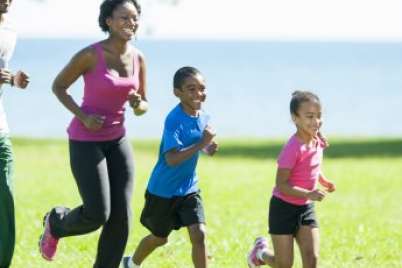
Fight for your right to play
When my three kids were small, we lived next to an urban park that included a playground, a soccer field, a baseball diamond, a basketball net, and an asphalt street hockey court. We played there almost every day for a decade as I organized impromptu three-on-three half-court basketball encounters, small-sided soccer matches, and scrub baseball games with kids and adults of all ages from around the neighbourhood.
When I wasn’t with my kids at our local park, I was playing adult drop-in soccer at different parks and school fields near my home. These games were populated by people from virtually every known country, culture, and language group on the planet. Depending on the day, players might range in age from 15 to 75, and you might hear as many as 10 different languages.
Related read: Free soccer program gives kids a place to play
These casual sport experiences were important to me, my children, and many others. My children forged enduring friendships and learned to love activity. Several neighbourhood kids escaped neglect at home and found belonging. Many Canadian newcomers made work contacts and landed jobs. Groups of international students built a support network. I started a business with a friend after he returned to China.
All sorts of remarkable experiences can emerge from the randomness of informal sport in community spaces. However, casual sport and activity is under threat in many cities.
I read a 2018 article from Australia recently where university researchers examined how informal sport experiences such as street basketball and park soccer bring public spaces to life in Sydney, Singapore, and London. Their research showed how these experiences build social cohesion and belonging among a wide array of people, especially marginalized and newcomer communities.
Unfortunately, as our urban centres grow, competition for our public spaces increases as well. In some instances, it means municipalities and school boards are starting to demand payment and permits from casual users, and in other instances, it means building developers tearing up turf for more malls, townhouses, and condos.
Occasionally, use of these spaces is also restricted by city ordinances and residents. In June 2019, there was much controversy when Toronto parks staff started taking down neighbourhood basketball hoops in the evening due to noise complaints.
Related read: 5 ways to keep kids playing sports
A similar dispute arose in Mississauga in July when a dad was asked by city bylaw officers to remove his portable basketball hoop from the curbside on his residential street following a neighbour’s complaint.
We live at a time when we’re trying to get kids and adults more active. Doesn’t it make sense to give everyone a place to go and provide opportunities for free play, rather than create more barriers?
Recent reporting on the increased costs of organized sports and the corresponding decline in kids’ participation suggests these opportunities are needed more than ever.
We would be wise to ensure continued free access to public spaces for informal play and activity. We would also be wise to ensure that our public spaces don’t disappear entirely. We should defend the right to play, and we should be prepared to speak up when our public play spaces come under threat.





